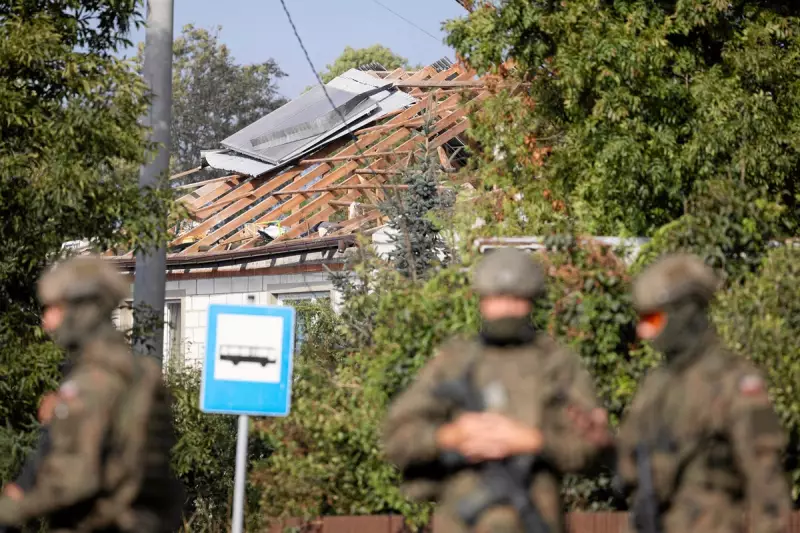
Polish fighter jets were scrambled and NATO protocols initiated after debris from a Russian military drone landed on Polish soil, marking a dangerous escalation in the conflict spilling over from neighbouring Ukraine.
The incident occurred in the early hours of Friday near the village of Hrebenne in the Lublin Voivodeship, a region that borders western Ukraine. The object is confirmed to be a remnant of one of the long-range 'Shahed' drones launched by Russia in a massive overnight aerial assault on the Ukrainian city of Lviv.
'All indications suggest a Russian drone entered Polish airspace,' a senior Polish military official stated. 'We are investigating the final moments of this object and how it ended up on our territory.'
The Polish Armed Forces Operational Command confirmed the breach, stating that the violation occurred around 4:23 AM local time near the border city of Zamosc. Radar systems tracked the object as it crossed from Ukraine before it vanished from surveillance.
Immediate NATO Response and High-Level Talks
In response to the breach, Poland immediately activated its air defence systems and put its air force on high alert. Crucially, Polish authorities have initiated consultations under NATO Article 4, which is triggered when a member nation believes its territorial integrity or security is threatened.
This move paves the way for emergency talks at the NATO headquarters in Brussels, bringing the military alliance one step closer to a potential direct confrontation with Russia. A similar incident in November 2022, which resulted in two fatalities, saw Warsaw initially consider invoking Article 4.
A Pattern of Provocation on NATO's Border
This event is not isolated. Polish Defence Minister Władysław Kosiniak-Kamysz emphasised that Poland's territory has been violated by Russian missiles multiple times since the full-scale invasion began in February 2022. Each incident represents a calculated risk that could potentially draw the Western alliance directly into the conflict.
The massive Russian attack targeted critical infrastructure around Lviv, a major city less than 100 kilometres from the Polish border. The strategic proximity means that any large-scale aerial assault on western Ukraine inherently risks cross-border incidents.
As tensions mount, the world watches to see how NATO will respond to this latest provocation on its eastern flank, a stark reminder that the war in Ukraine continues to threaten broader European stability.





